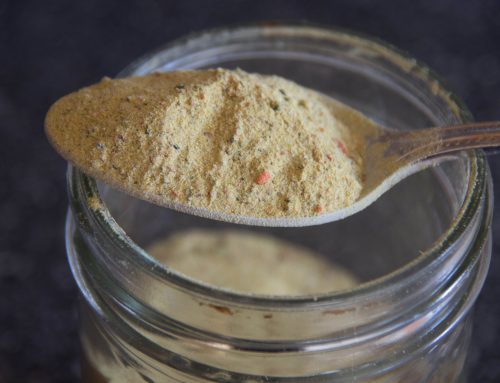There are two things that I have had trouble making in the past. One, is pie dough. The other is scones. I think it has to do with getting the butter distributed evenly to provide that flaky texture that both of those possess. Or maybe because they are two recipes that you really need to follow the instructions and have less give. (I am much more a cook then a baker!) I think I have solved my problem though.
First, if you are doing it by hand, grating the frozen butter into the flour is a great way to get those pea size pieces without fighting with the dough and over-kneading it. When you have pieces of butter left in the dough they will melt and that is what will produce the flaky texture. Another important thing seems to the unsalted butter. I almost never buy unsalted and for most things it really doesn’t make a difference, but for scones, it seems to make a world of difference.
Scones are a current favourite in our home at the moment. Not only can I make them now with amazing results but they are so easy and quick to do.
I do use my food processor, because it makes it easy without any mess and by the time my oven is preheated, they are ready to put in.
The following is the base of the scone, and to that you can add anything you want. The trick however, is that whatever you add should not be adding moisture or dryness to not upset the balance between the flour/milk/butter ratio. You also don’t want to add anything warm that would melt the butter. If you don’t have a kitchen scale, a quick google search will give you the amounts in cups, but using the scale, is in my opinion, the best way to get the right measurement in these types of recipes.
Simple Scone Base (make 6 scones but I usually double it)
- 200g flour, plus more for handling the dough
- 1.5 tsp baking powder
- 2.5 tbsp sugar (for sweet scones)
- 0.5 tsp salt
- 60g cold or frozen butter
- 140-150g milk (I use almond or soy)
now to this you can add you choice of ingredients to make the flavours of your choice.
For a simple cheese scone that is great for lunch, supper or with a savoury breakfast simply:
- omit the sugar in the base recipe or add only a small amount to add a bit of sweetness
- add 1/2 cup of grated sharp cheddar
One of our favourites has a taste that closely resembles pannetone:
To the base I add:
- two drops of lemon zest extract (or zest of 1 lemon)
- the zest of one orange
- 50g chopped raisins (or cranberries… or any other dried fruit)
Once you have decided what you will put in them, here is how to make them…
- Preheat oven to 425° F and line a baking tray with parchment paper.
With a food processor:
- First pulse the flour, baking powder, sugar (if using) and the salt a few times until well mixed.
- Cut the cold butter into small cubes and add them to the dry ingredients and pulse four or five times until the butter is mixed in and the largest pieces you can see resemble small peas.
- Add the other dry ingredients such as the zest, chopped dried fruit, cheddar etc… and pulse once or twice.
- Add the cold milk and pulse again just until the dough comes together. There should be no longer spots of flour and the dough should not be too wet.
By hand:
- In a large bowl, mix the flour, baking powder, sugar (if using) and the salt.
- Get your cheese grater out and grate the butter into the flour and just mix. You could also go the longer way and cut the cold butter into small cubes use a pastry cutter or two forks as you would with pie dough. The important thing is to not handle the dough too much and to not smoosh the butter into the flour too much.
- Mix in the chopped dried fruits, cheese or whatever other dry ingredients.
- Add the milk and stir in quickly just until the dough comes together and doesn’t show big spots of dry flour anymore.
Enjoy! and I would love to know what flavour combos you come up with!






I used to fear making pie dough too. Then recently, a mom & tot cooking class at the local community centre helped me make the breakthrough.
She didn’t use frozen butter or cold shortening cut into the flour blend. What she did have was cold water and manipulating the dough as little as possible, just the bare minimum for everything to be blended. Then you put it in the fridge for a good 45 minutes before handling it to roll out into a pie tin. It has simplified my life. Goodbye Tenderflake! If you make the dough ahead of time, just take it out of the fridge a good 15-20 minutes beforehand so it isn’t too cold and stiff. Manipulating stiff dough means extra work, and it could make the pastry less flaky and more tough.
Good luck!
Amazing recipe, tastes soo good with lemon curd! Thank you! 🙂